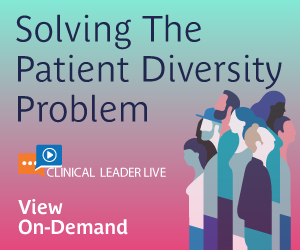How To Improve FDA Inspection Readiness & Outcomes By Mining Publicly Available Data
By Penelope Przekop, MSQA, RQAP-GCP, and Valerie Przekop
The chicken and egg debate rages on; meanwhile, the life sciences industry has concluded that the regulation came  before the observation.
before the observation.
When establishing a company, clinical development program, manufacturing operation, or post-marketing strategy, logic dictates that understanding the applicable regulatory requirements is key. That knowledge underpins our ability to make appropriate decisions and take proper actions going forward. As an industry, we share the noble goal of developing and marketing efficacious products supported by data integrity, not only to enhance the lives of our patients but also to keep them safe.
Sharing such a clear objective is inspiring, especially when we’ve been provided a set of solid rules. Yet ambiguity creeps in at every point on the project management timeline. Unlike standard operating procedures (SOPs), the regulations don’t tell us exactly who should do what, in which order, at what time. Most global regulators provide the high-level rules, some guidance, and a lot of free will. And with free will comes interpretation.
At the dawn of time, no one put forth the regulations on a leaf, rock, or square of thin parchment. Instead, someone, likely a mom, realized that water steeped with a plant growing next to her hut rejuvenated her loved ones, while another worsened their condition. And so it went, on and on; a cascade of information, medical discoveries, innovations, and manufacturing advancements occurred as time progressed, yet an event in 1937 redirected scientific evolution.
That year, a Massengill, Tennessee, drug company began marketing a liquid sulfa drug, Elixir Sulfanilamide. Unfortunately, the solvent in Elixir Sulfanilamide was a highly toxic variant of antifreeze; as a result, over 100 deaths occurred from taking the drug. Public outcry over the tragedy was critical in breaking an ongoing Congressional deadlock over tighter regulations for pharmaceuticals and medical devices (as well as foods and cosmetics), leading to the enactment of the first Food, Drug, and Cosmetic (FD&C) Act in 1938. As time went on, the regulations we know and love, our directives, were developed with a new focus in mind: safety and efficacy outcomes. At the onset, regulations were designed to prevent the recurrence of such horrors, to keep us safe in our pursuit to feel better, or even to live.
The observation came before the regulation. So, why aren’t we studying the observations more closely?
Today, regulatory health authority inspectors review our submissions, decree our products efficacious and safe, hold us accountable, and act if we fail to comply. So, as they creep toward us, our inspection readiness strategies generally begin with a list of regulations created to verify, organize, and gap-fill documentation. We aim to demonstrate that we followed processes developed from our shared industry interpretation of the regulations. “We follow FDA and ICH guidance. We know how to do it right,” you might say, with confidence.
Unfortunately, we do not yet have a guidance to account for every regulation and complex scenario that surfaces in our industry. What we do have is an FDA statement that says:
Guidance documents represent FDA's current thinking on a topic. They do not create or confer any rights for or on any person and do not operate to bind FDA or the public. You can use an alternative approach if the approach satisfies the requirements of the applicable statutes and regulations. (https://www.fda.gov/industry/fda-basics-industry/guidances)
Did you notice the part about using a terrifying solution called an alternative approach? It’s one of those sentences that we seem to skim over. Acknowledging it could be overwhelming; the responsibility involved immense. What if the FDA doesn’t agree with our approach? What if a patient is unsafe? What if heads roll in our Zoom meeting? No wonder most are unwilling to do more than toss our inspection readiness goals into a virtual bowl with our shared industry standard interpretations and mix them up with a cup of risk assessment. We stress-test, discuss, and send the proposal out for approval. While this seems reasonable given the millions of dollars often at stake, perhaps an alternative worth considering is to focus on gaining clarity through a real-world outcomes approach.
Existing data is being explored and utilized throughout the industry in a variety of ways, so why not develop evidence-based inspection strategies? Now that we have years of real-world regulatory outcomes data available, why are we ignoring their power to serve as a corrective lens for our interpretations of the law?
To consider doing so, we must hold fast to three critical assumptions:
- Despite real-world regulatory inspection outcomes data, all applicable regulations must be followed.
- The approach must be documented, regardless of what it is. If it’s not documented, it still did not happen.
- The odds of evidence-based decisions and approaches resulting in successful outcomes decrease or increase based on who’s making them.
Evidence-based decision making can be appropriately executed by individuals with extensive GxP experience, a deep understanding of the product development process and life cycle, and expertise in regulatory inspection facilitation. Ideally, they would also have proven process development experience, just the right mix of creativity and logic, and the ability to inspire others to make changes, all while using the industry standard lexicon we all understand. Okay, so it may take a small team. Regardless of how we resolve the question of who, we can effectively harness real-world regulatory inspection outcomes to develop evidence-based strategies.
Once we reach that goal, perhaps we’ll be amazed to see what was missed along the road we began traveling down in 1937. A couple of years ago I bought a gadget to clean my glasses. The gadget’s packaging said that I’d “be amazedat the crystal-clear world I’ve been missing!” I was skeptical about that promise but, I must admit, it did change my life, at least in regard to my vision. A clear lens aids in navigating the road ahead – quite literally in the case of my gadget.
There is a variety of publicly available information on inspection outcomes, including the following resources from the FDA:
- https://datadashboard.fda.gov/ora/cd/inspections.htm
- https://www.fda.gov/inspections-compliance-enforcement-and-criminal-investigations/compliance-actions-and-activities/warning-letters
- https://www.fda.gov/inspections-compliance-enforcement-and-criminal-investigations/inspection-classification-database
- https://www.fda.gov/drugs/warning-letters-and-notice-violation-letters-pharmaceutical-companies/warning-letters-2020
- https://www.fda.gov/drugs/human-drug-compounding/compounding-inspections-recalls-and-other-actions
- https://www.pharmaceuticalonline.com/doc/u-s-sites-play-surprise-starring-role-in-fda-s-drug-gmp-warning-letter-report-0001
- https://www.pharmaceuticalonline.com/doc/fda-fy-warning-letter-trends-a-closer-look-at-drug-product-manufacturers-0001
Determining how we can fully utilize available information on inspection outcomes is a key challenge. The following are our suggestions:
- The simple approach that will help: The most straightforward approach is to use inspection outcomes data to drive prioritization of inspection readiness focus. Don’t skip the low-hanging fruit (see my previous article on that topic); however, make sure that your company isn’t overfocusing inspection readiness efforts on functions, documents, or processes that have never been cited in the history of the agency. If you take that approach, remember the key assumptions noted above must be top of mind. The prioritization strategy must be balanced, considering that there never seems to be enough time to do it all. (Hint: A strong compliance focus on Day 1 keeps the inspection readiness priority list short.)
- The complex approach that could change the game: FDA 483s and warning letters can be requested from the FDA for a fee. There are also other avenues to gain access to actual FDA 483s and warning letters, often for a subscription fee (e.g., Govzilla). The FDA, as well as other regulatory authorities, provides an inspection reference number for each publicly shared high-level observation, which can be used to locate specific 483s and warning letters. Details can then be explored to clarify why the FDA deemed the observation necessary. It could be that the investigator or company simply failed to comply. However, it could also be that those on the hot seat believed that their risk-based decisions, creative processes, or bold actions, or lack thereof, put them on the compliant side, only to find out that the FDA disagreed. That is what I would like to know: What was their approach? Why did it fail to satisfy the requirement? That is valuable detailed information, not only for your own level of expertise and for your company, but also for the industry at large.
By opening the floodgates of outcomes data, we can potentially expand interpretive insight, avoid making the mistakes of others, and gain clarity on what types of alternative approaches can actually work. If only we could all go back to 1937 and alter the course that led to the industry’s laser focus on exciting science (although it is exciting!) and finance (although it is important!) that relegates quality and compliance to the back of the room or should I say, the end of the study, more times than we’d like to admit. If we could just do that, inspection readiness might be a lot easier today. It’s too late for that, but we can begin to explore our industry’s past, considering that the observation actually came first.
About the Authors:
 Penelope Przekop, MSQA, RQAP-GCP, partners with pharma and biotech companies of all sizes to develop risk-based strategic solutions for establishing (or enhancing) GxP quality systems that support growth and ensure long-term compliance. She has 30 years of industry experience in strategy development, quality systems and assurance, inspection readiness, and organizational training. Przekop has held leadership positions in both Big Pharma and CROs, including Novartis, Covance, Wyeth, and Johnson & Johnson. She is the author of Six Sigma for Business Excellence (McGraw-Hill). Her upcoming book, 5-Star Career: Why You Don’t Have Yours Yet and How to Get It (Productivity Press), launches in 2021.
Penelope Przekop, MSQA, RQAP-GCP, partners with pharma and biotech companies of all sizes to develop risk-based strategic solutions for establishing (or enhancing) GxP quality systems that support growth and ensure long-term compliance. She has 30 years of industry experience in strategy development, quality systems and assurance, inspection readiness, and organizational training. Przekop has held leadership positions in both Big Pharma and CROs, including Novartis, Covance, Wyeth, and Johnson & Johnson. She is the author of Six Sigma for Business Excellence (McGraw-Hill). Her upcoming book, 5-Star Career: Why You Don’t Have Yours Yet and How to Get It (Productivity Press), launches in 2021.
 Valerie Przekop is a BS, Management Science & Engineering, and a BA, Psychology, candidate in the Stanford University Class of 2021. She has gained pharma industry inspection readiness experience working as a junior quality and compliance consultant. She has also served as a junior consultant in the pharma industry marketing space. She has held various roles at Stanford University including, but not limited to, new undergraduate housing coordinator and student coordination, Office of Student Engagement. She hopes to pursue a graduate degree at Stanford, where she will continue to compete for the Varsity Track and Field Team.
Valerie Przekop is a BS, Management Science & Engineering, and a BA, Psychology, candidate in the Stanford University Class of 2021. She has gained pharma industry inspection readiness experience working as a junior quality and compliance consultant. She has also served as a junior consultant in the pharma industry marketing space. She has held various roles at Stanford University including, but not limited to, new undergraduate housing coordinator and student coordination, Office of Student Engagement. She hopes to pursue a graduate degree at Stanford, where she will continue to compete for the Varsity Track and Field Team.

